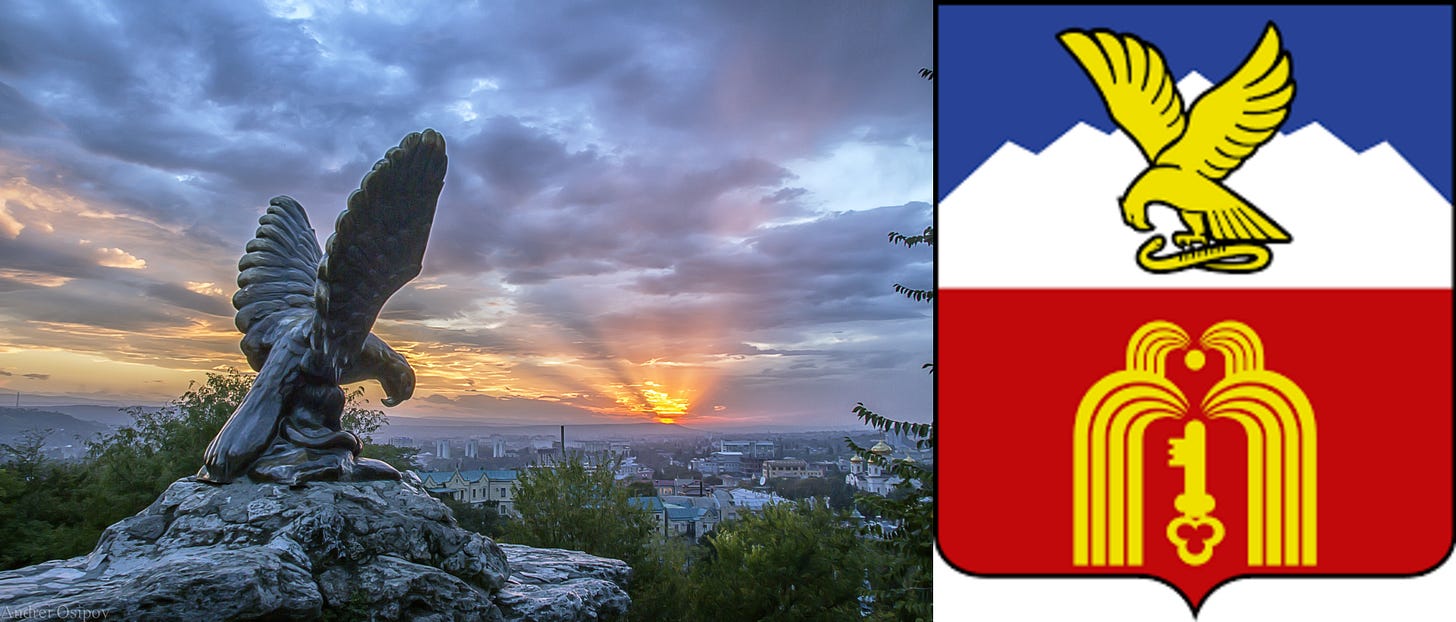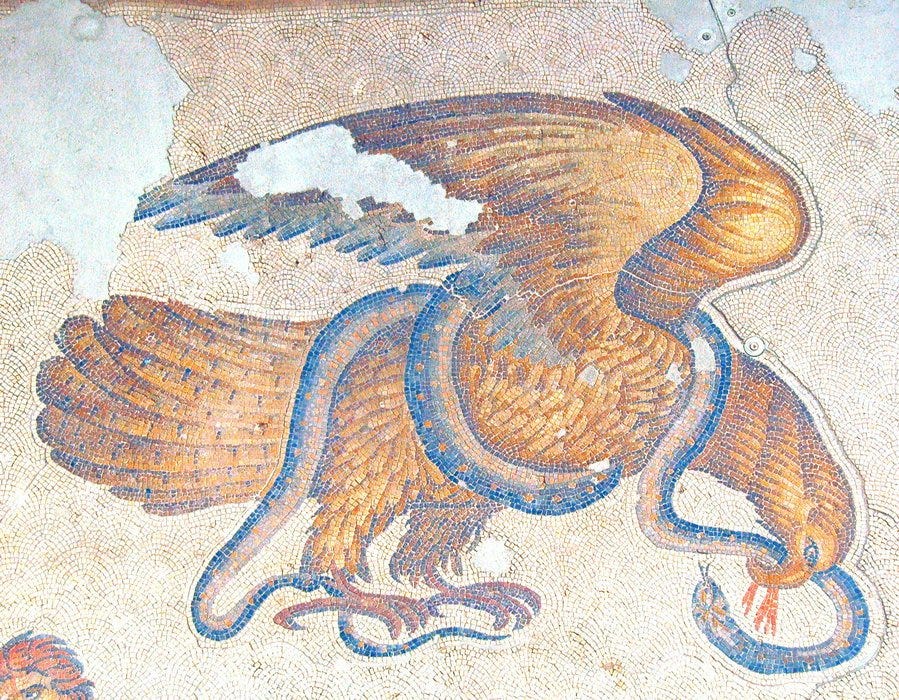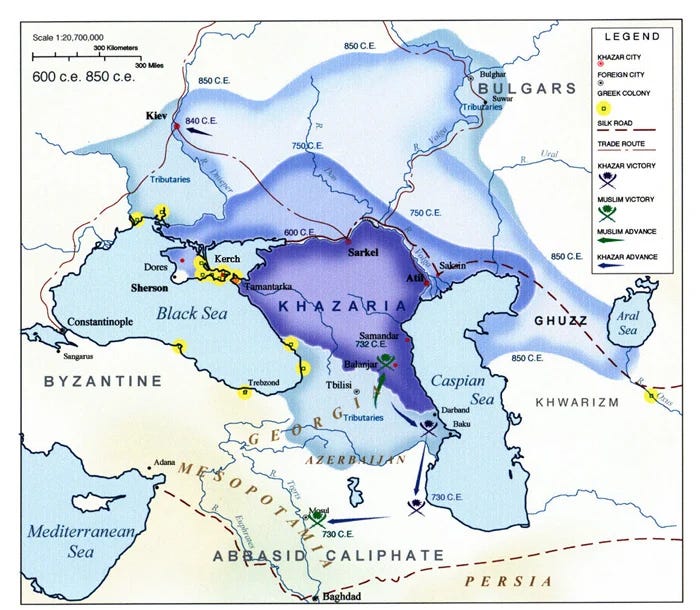Ritual War by Nicholas Kozlov [Original Translation]
Chapter 1: Khazars
This is the official WorldWarNow translation of Nicholas Kozlov’s book, Ritual War. The non-fiction work covers the tumultuous first and second Chechen Campaigns, from a meta-historical and Orthodox Christian perspective. Kozlov is perhaps one of modern Russia’s most ‘esoteric’ Orthodox Christian Monarchist writers, among quite a broad collective of other great Monarchist contributors such as Oleg Platonov, Yuri Vorobievsky, Vladimir Karpets, Mikhail Nazarov, Vladimir Mahnach, Brother John Konstantin Dushenov, Leonid Bolotin, Vladimir Osipov, Peter Multatuli, Yegor Kholmogorov, Dionysius Kaptar and Sergey Fomin. Unfortunately, the esoteric approach to wordplay, especially with all the grammatical nuances of the Russian language and various analogies made by Kozlov make his works difficult to translate, but at the same time very rewarding to read (once the reader grasps the ideas proposed).
Kozlov’s short book covers an internal conflict within the Russian Federation, which took the lives of tens of thousands of Russian soldiers, and a large, yet unknown, number of civilians between 1994 and the early 2000s. These civil wars were given the the official designation of ‘Chechen Campaigns’. For Orthodox Christians, this modern conflict and war is significant because it has made at least two saints, New-Martyrs Eugene Rodionov and Father Anatoly Chistousov. Many aspects of the skirmishes and wars in the region have direct ties and links to distant, historic events. Religion plays a key role for both sides of the conflict, which the reader will notice once Kozlov takes them on a journey through the misty forests and jagged slopes of the Caucuses Mountains.

Index of chapters:
Khazars
The Dance of Death
Khazarian Dispersion
A War Commissioned
Red Oil
Gog and Magog
Hyenas of War
The Bitterness of Beslan
Occult Terrorism
Khagan and Bek
The Wolf and the Bear
Kondopoga
The last battle of Colonel Budanov
Epilogue
Introduction
It is not difficult to notice that the image of an eagle tormenting a snake on the coat of arms of the city of Pyatigorsk echos the words of the Gospel’s eschatological prophecy:
“For wherever the carcass is, there the eagles will be gathered together.” (Matthew 24: 28).
It is possible to see the representation of the antichrist in the snake (etymologically - corpse, teraphim, serpent, come from one snake root in Hebrew), the eagle, dating back to the pre-Christian iconography of Zeus (Jupiter) taking the form of an eagle and defeating the snake, or the Egyptian Horus (falcon-headed god), fighting with the crocodile-Seth, symbolizes Roman statehood, which passed to Moscow, the Third Rome through Byzantium.
The eagle was considered not only the bird of Jupiter by the Romans, but also the genius of the emperor. The eagle, leaning on a bundle of lightning, served as a military badge of the legions.
In the Vedic tradition, the eagle is known as a divine messenger, and it is often depicted as a garuda bird attacking a snake.

On the Elis coins (Elis is a region in the north-west of the Peloponnese) an eagle torments a snake. In the Scythian art pieces, discovered by archeologists in Southern Russia, of the ‘animal style’, a recurring narrative is a falcon with a reptile in its beak.
Scenes of massacred snakes are often found in the Russian princely emblems, for example, on the coins of the Suzdal-Nizhny Novgorod principality, the snake is tormented by a griffin, and on the coins of the Mikhail Andreevich, prince of Vereya - by an eagle.
The composition of “the eagle tormenting the snake” is also common in modern state symbols. The coat of arms of Turkmenistan, and depicted on a Turkmen coin: a five-headed eagle holds a two-headed snake in its paws.

The state emblem of modern Mexico is an eagle tearing a snake with its claws. In San Augustino, Central Colombia, there is a very ancient and large statue representing a bird pecking a snake.
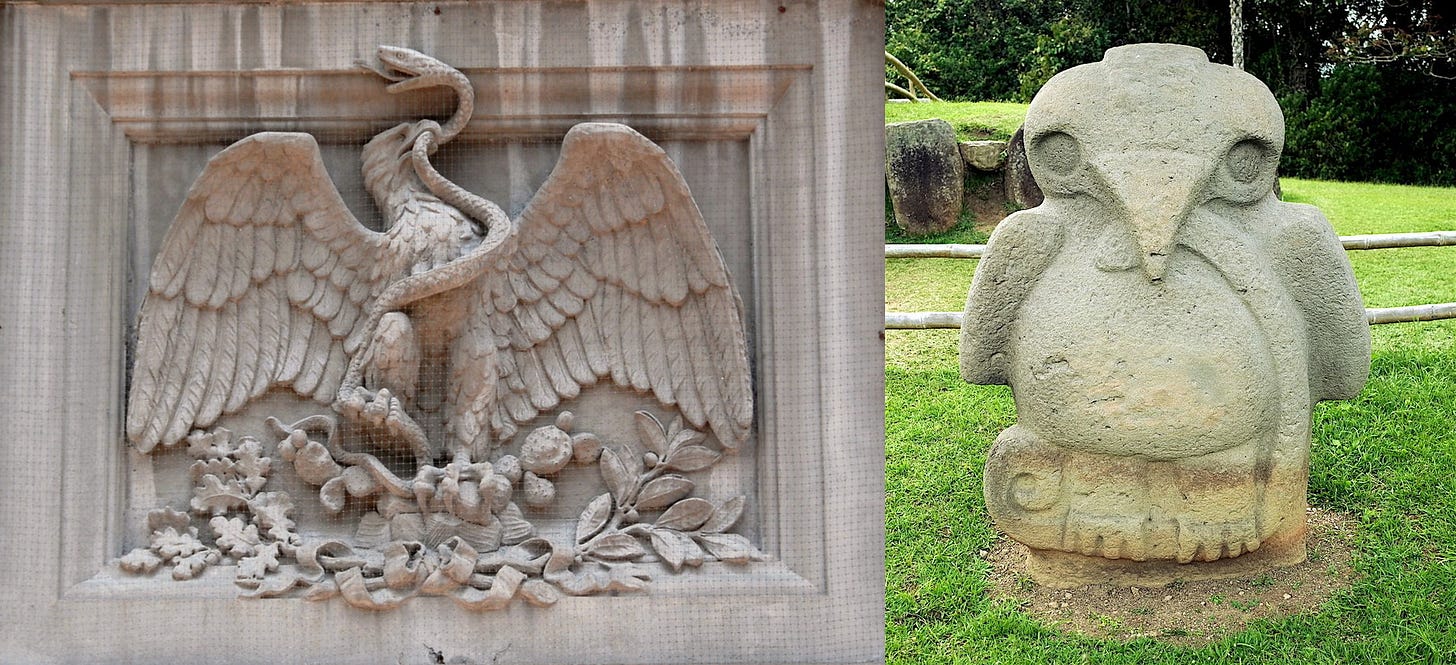
The sign of the Special Manchurian detachment (‘Особый Манжурский Отряд’ in Russian, thus the abbreviation OMO -WWN), established by the Ataman Gregory Semyonov, was a copper silvered two-headed eagle without crowns, holding in his claws a serpent.

Should eschatological and prophetic importance be given to modern symbolic images, such as the sculptural composition of an eagle tormenting a snake, which is the coat of arms of the city of Pyatigorsk?
We have to think about it, taking into account the ‘Geo’ and ‘Ethnographic’ position of Pyatigorsk, which is located near the autochthonous peoples, considered to be the descendants of the lost tribes of Israel.
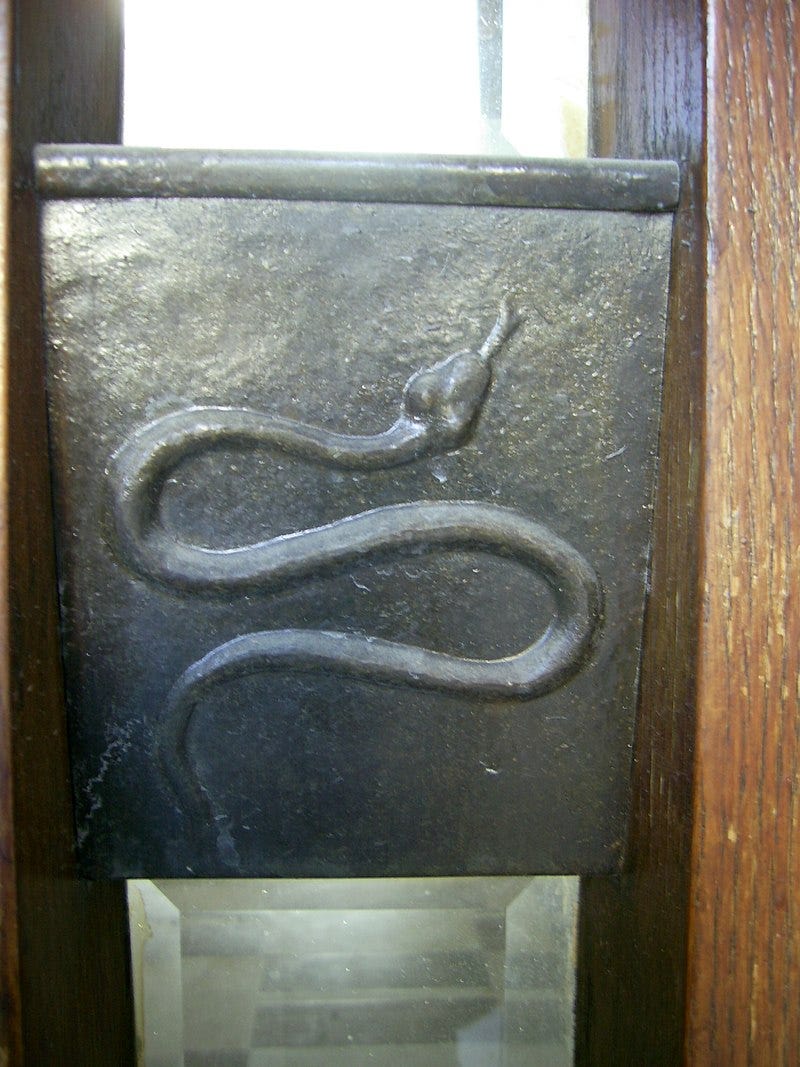
Emblematically, the tribe of Dan, whose symbol is that of a snake, according to the prophecy of Patriarch Jacob: “Dan shall be a serpent (Nakhash) by the way” (Genesis 49:17) and bearing snake self-names: Chechens (NoHChi) and iNGuShi.
In an additional comment, the exegesis of Professor Lopukhin, the composer of the first Orthodox Study Bible in Russian (1904) is provided by Nicholas Kozlov:
Luke 17: 37 and Matthew 24:28;
'The disciples ask: where exactly will this separation of some people from others take place? The Lord answers that this will be done wherever there are people who deserve punishment.
Apparently, the real meaning of the verse is that the second coming of the Savior will be at a predetermined time, when evil has reached its destructive development, as before the flood or the destruction of Sodom and Gomorrah. When life leaves the body, it becomes a corpse, and eagles flock to it: this will be the case when the strongest development of evil begins in the world. The Son of Man and His Angels will then appear to execute divine judgment.’
Chapter 1: Khazars
Throughout the Russo-Chechen war in the Caucasus, the Talmudic ritual inscription becomes clearly visible.
Researchers speak of the existence on the Lower Volga and the North Caucasus in the VI-XI centuries of a complex religious and ethnic composition of the state education known in history as the Khazarian Khaganate.
Its main population was the Khazars, or Kozars (Kozarim), which means ‘red’, according to some reports, descendants of the Jews of the lost tribes of Benjamin and Dan, who abandoned the faith of their fathers.




